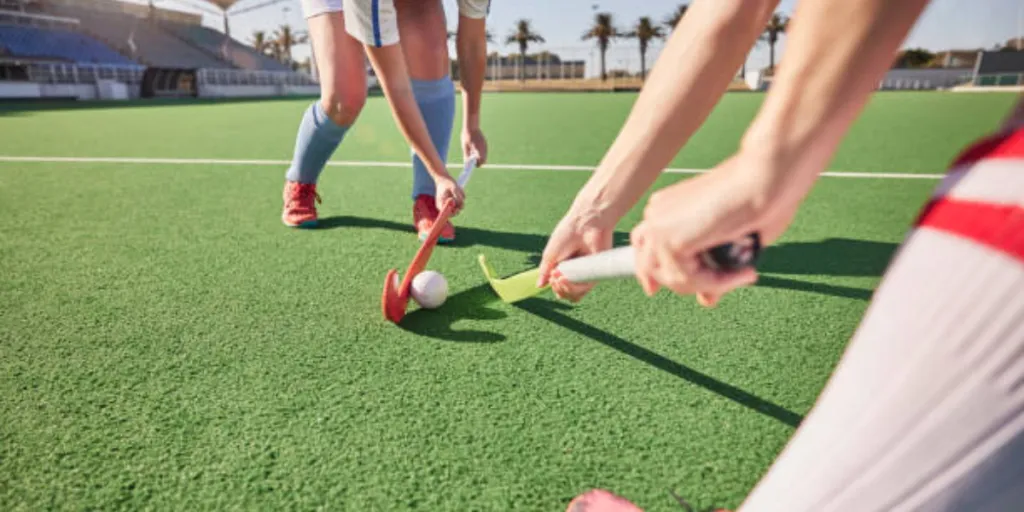In the world of sports, choosing the best artificial grass is essential for optimizing performance. Also known as synthetic turf, artificial grass is a popular playing surface for a number of sports such as soccer, tennis, and even golf.
What consumers enjoy the most about artificial grass is that it’s incredibly durable and easier to maintain than real grass, meaning it can be used frequently in various climates and weather conditions without suffering too much damage.
Read on to learn more about the best artificial grass options for sports popular in today’s market.
Table of Contents
Global market value of artificial grass
Types of artificial grass for sports
Conclusion
Global market value of artificial grass
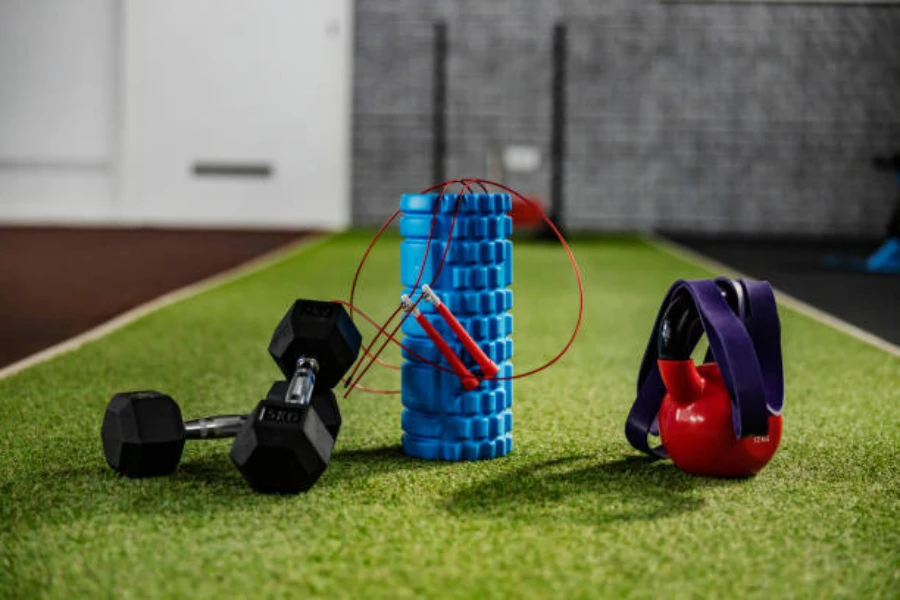
Artificial grass is growing in popularity around the world due to severe changes in environments and weather patterns, which are making it more difficult to maintain authentic grass. Artificial grass is a popular alternative because it provides the same feel as real grass yet doesn’t need to be maintained in terms of mowing and watering. Artificial grass has thus allowed schools, sports clubs, and professional sports venues to significantly cut maintenance costs by using environmentally friendly playing surfaces that are easier to upkeep.
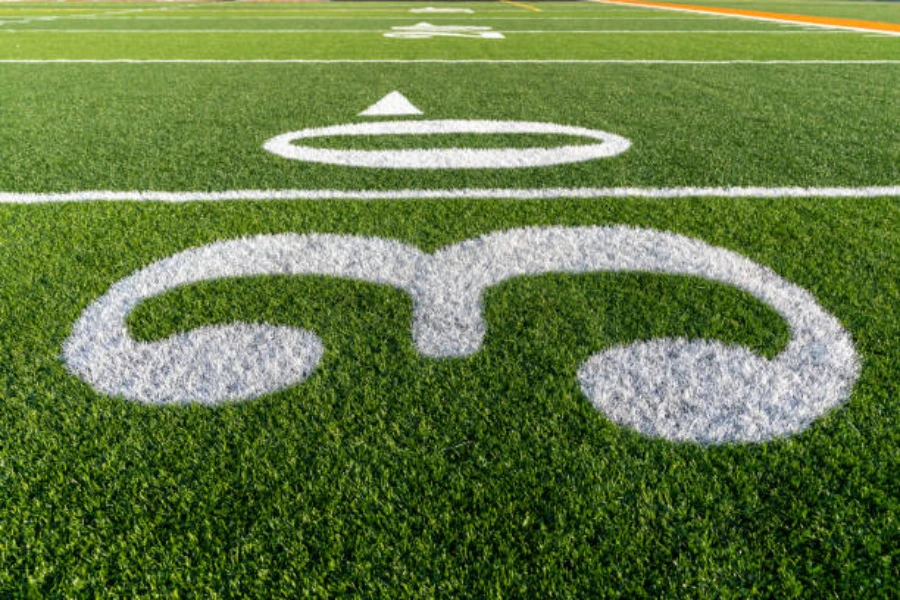
According to Global News Wire, the global market value of artificial turf in 2023 is over US $77 billion. This number is projected to grow to at least US $121.30 billion by 2032 at a compound annual growth rate (CAGR) of 7.9%.
Types of artificial grass for sports
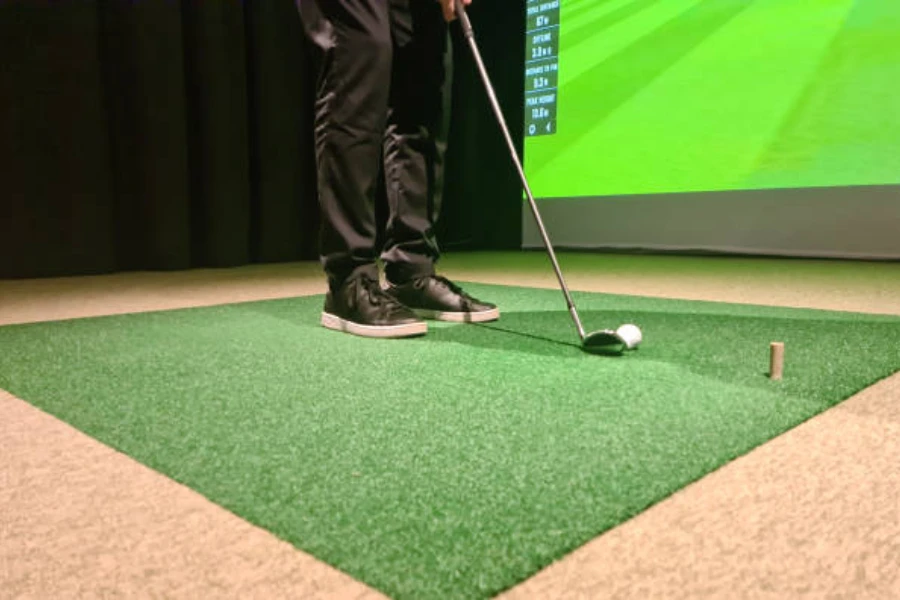
Artificial grass can be utilized in a number of different courts and playing fields as a replacement for real grass. Choosing the best artificial grass can be a big task though, as not all of it is designed to be used universally and some versions are better suited to particular sports than others. When choosing which grass is best for them, consumers will want to take into account factors such as durability, grass height, materials, and of course, what sport the grass will be used for.
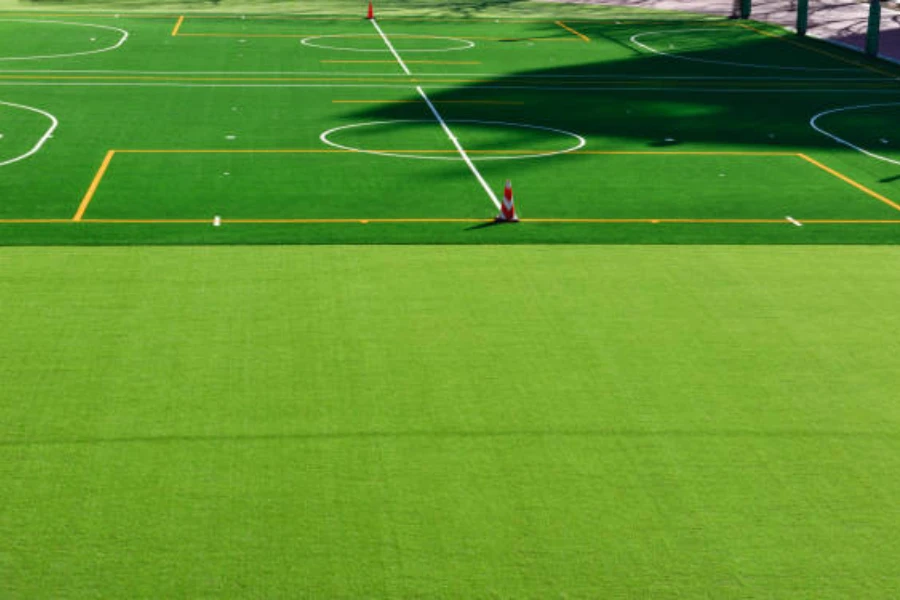
According to Google Ads, “artificial grass” has an average monthly search volume of 246,000. Between May and November 2023, searches decreased by 45% as compared to a high search volume of 368,000 in May and June.
Looking at the different types of artificial grass for sports, Google Ads shows that “football turf” comes out on top with 12,100 monthly searches followed by “cricket turf” with 6,600 searches. Meanwhile, “putting green turf” receives 5,400 searches and “tennis court turf” gets 390.
Below, we’ll take a closer look at the key features of each of these styles of artificial grass.
Football turf
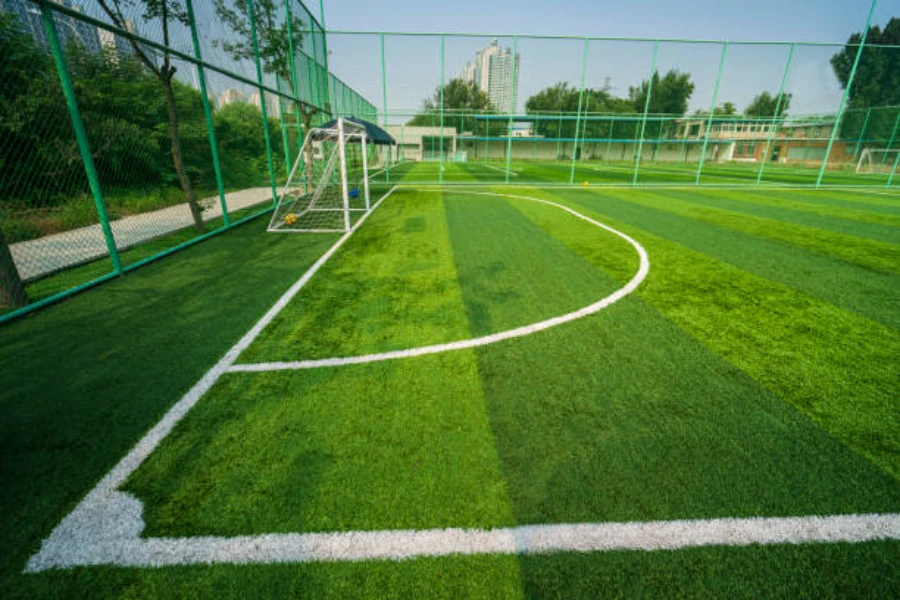
Football or soccer turf is designed specifically for use on football pitches and, depending on the level of play, it may need to meet FIFA standards. Factors designating its quality include fiber durability, so that the grass doesn’t flatten; the height of the grass, ensuring quick ball movement; as well as traction. The infill material is generally rubber or sand, which should help to enhance the performance by creating a stable playing surface.
It’s also important that any turf pitch has a good drainage system in place and UV resistance so that it retains its green color over a long period of time.
Google Ads shows that over a six-month period between May and November 2023, searches for “football turf” remained steady at 12,100 searches per month.
Cricket turf
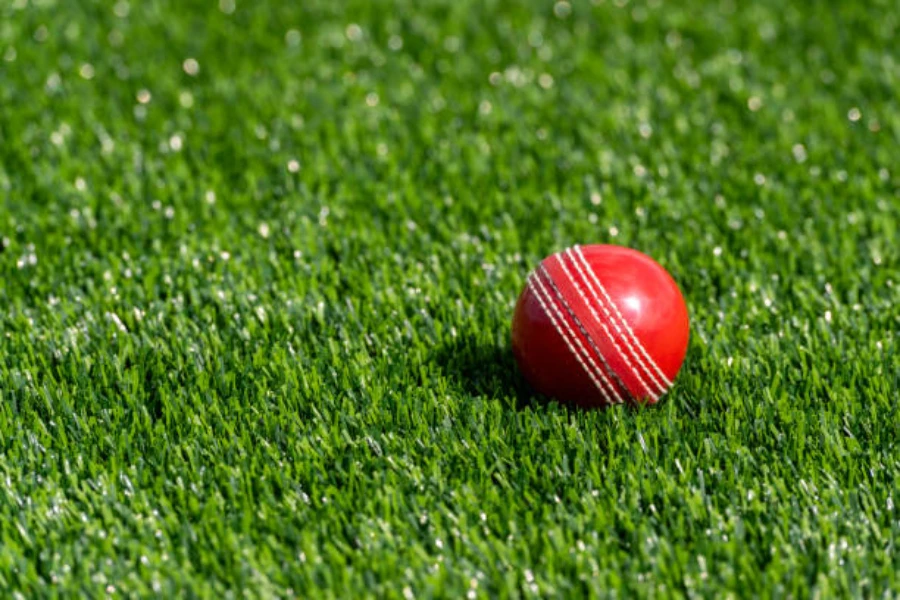
Cricket is a very popular sport in certain regions that requires specific artificial grass to enhance play. The height of the grass is generally shorter than other types of playing surfaces so as to maintain the cricket ball’s consistent bounce. In addition, it should replicate natural grass via a smooth surface. Cricket turf also needs to be shock-absorbing, upholding both the ball’s bounce and the joint health of the players.
Specific cricket pitch markings may also be implemented into the design. (Cricket turf is very similar to hockey turf so the two can be used for multi-sport purposes, which is ideal for sports clubs.)
Google Ads shows that over a six-month period between May and November 2023, searches for “cricket turf” increased by 19%, with the highest number of searches coming in July at 9,900.
Putting green turf
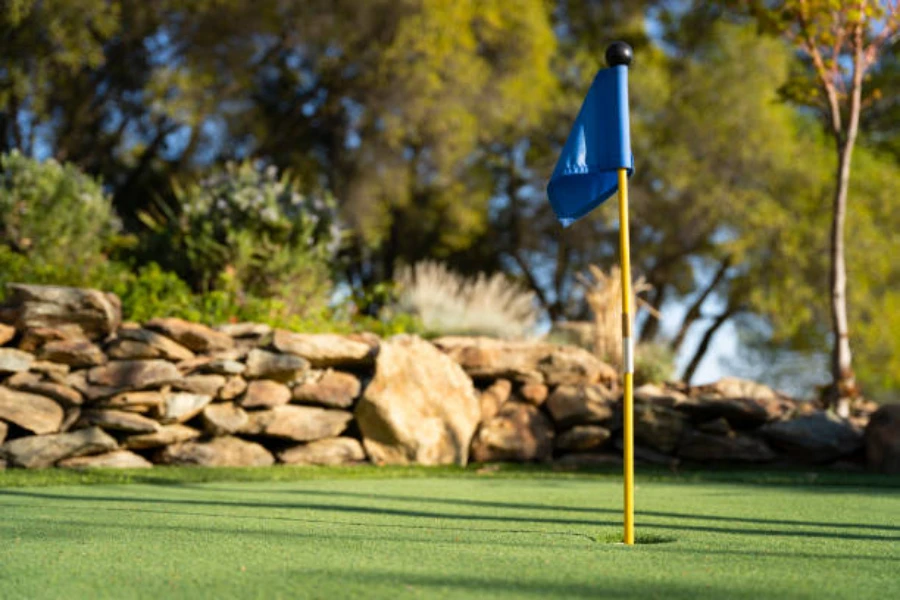
One of the most popular types of artificial grass for sports is putting green turf. Designed specifically for golf, putting green turf mimics the green found on golf courses and allows for fast and smooth ball movements. In addition, high-density fibers help to give it a lush and authentic appearance, and some designs have a natural feel too.
Putting green turf can be used both indoors and outdoors for practice sessions, so it’s important that the ball’s reaction is the same as what it would be on a regular golf course. Some putting green turf can be designed with slopes incorporated into it, providing an extra challenge for players.
Google Ads shows that over a six-month period between May and November 2023, searches for “putting green turf” decreased by 14%, with the highest number of searches coming in May, June, and August at 8,100.
Tennis court turf
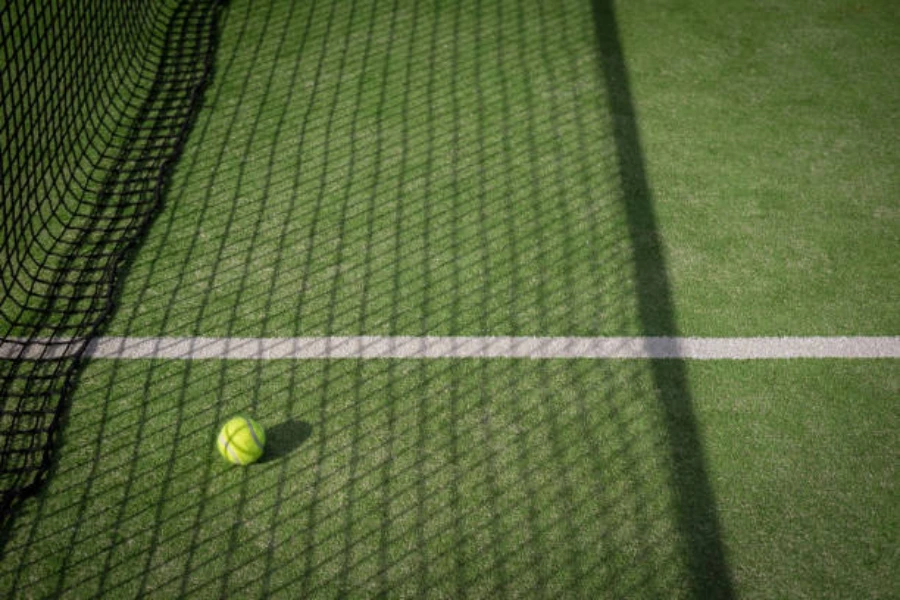
Tennis is a unique sport that requires an equally unique type of artificial grass to be played on. The shorter the length of the fibers, the better the ball will bounce. The turf also needs to be consistent so that players can better predict how the ball will bounce. Tennis court turf should also mimic a natural grass court playing experience, but doesn’t come with the constant need for maintenance, which can be a big benefit to places that receive significant rainfall.
Traction is another big factor to consider with tennis court turf since players will be making a lot of short and quick movements. Therefore, there should be enough shock absorption within the infill material to ensure minimal impact on players’ joints so as to prevent injuries. Consumers will be looking for turf that is water-resistant so that play can resume play in light rain conditions.
Google Ads shows that over a six-month period between May and November 2023, searches for “tennis court turf” decreased by 19%, with the highest number of searches coming in August at 720.
Conclusion
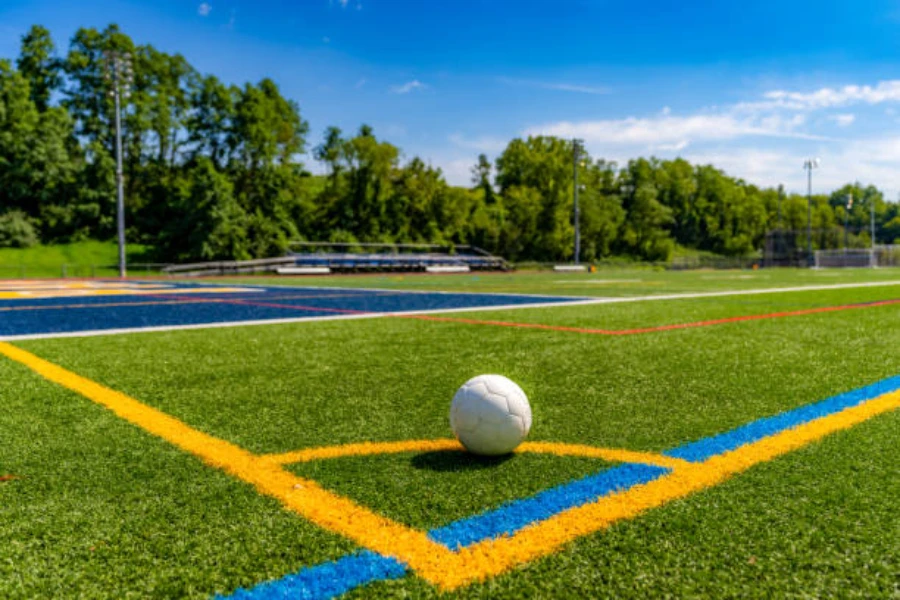
The best artificial grass for sports will depend on the sport being played, the playing conditions, and the level of play. Different fiber heights as well as different infill materials will greatly affect how particular balls bounce and how quickly players will be able to react. Retailers must keep in mind that certain types of turf will also need to pass different criteria set by professional sporting bodies if it is being used at higher levels of play.
No matter whether you want to source professional or non-professional types of turf, you’ll find everything you need on Alibaba.com.
